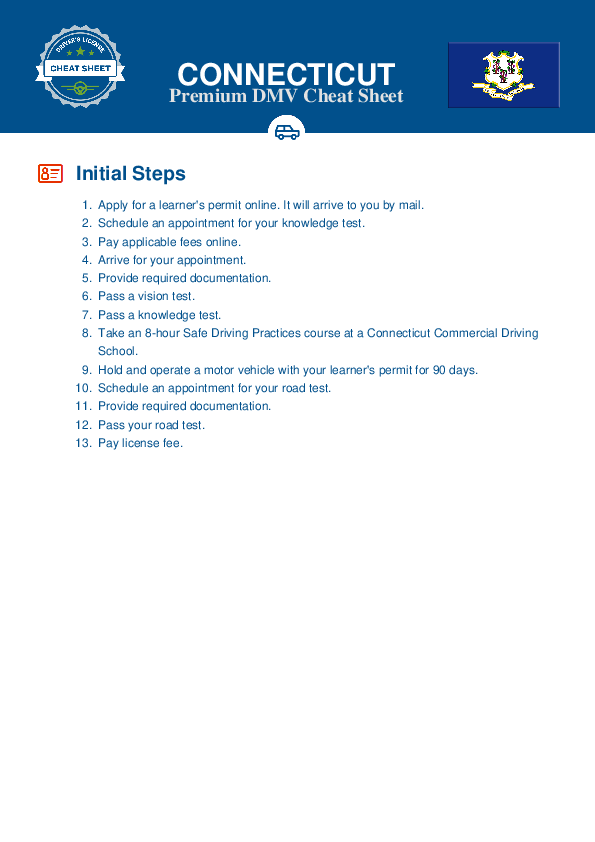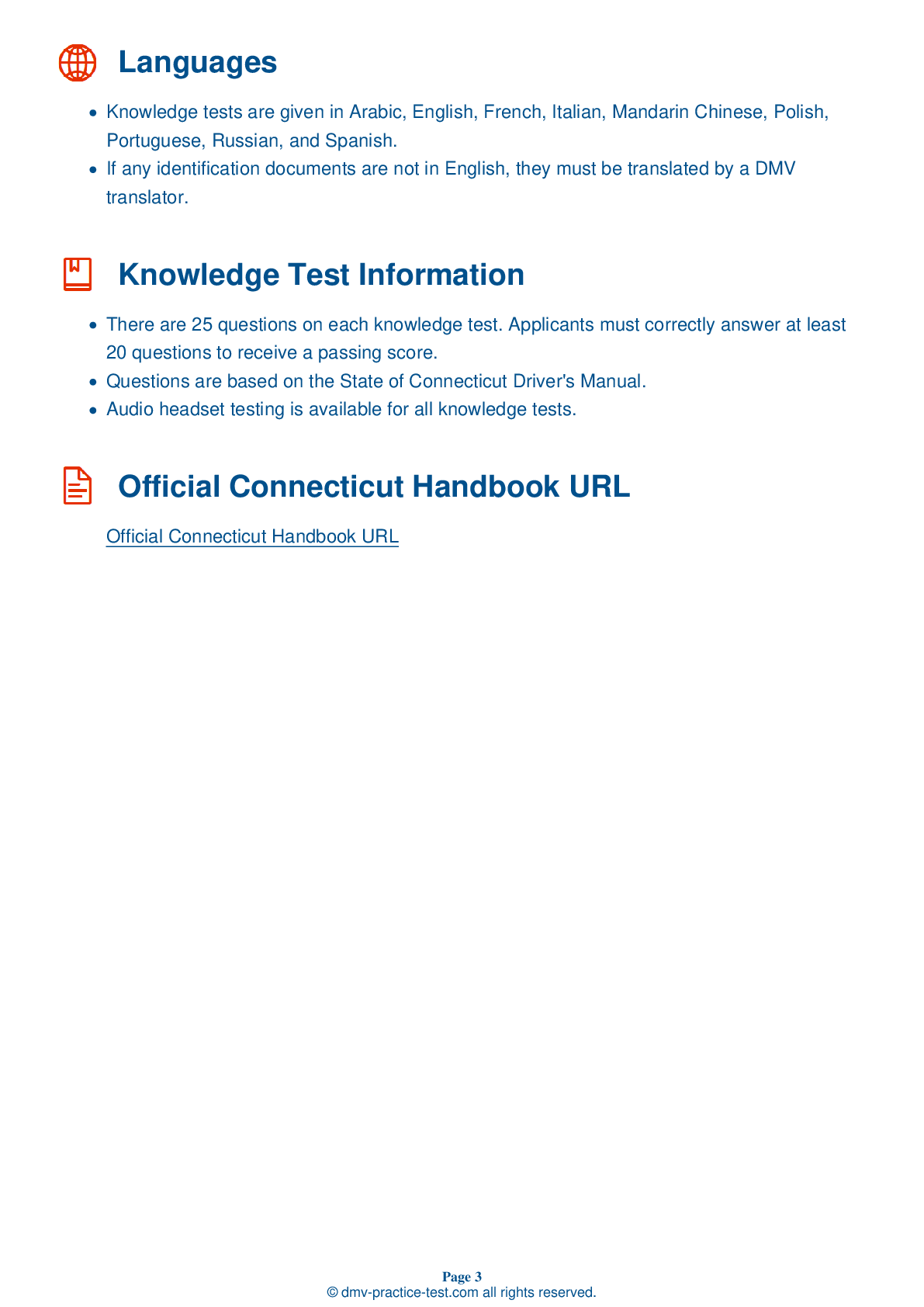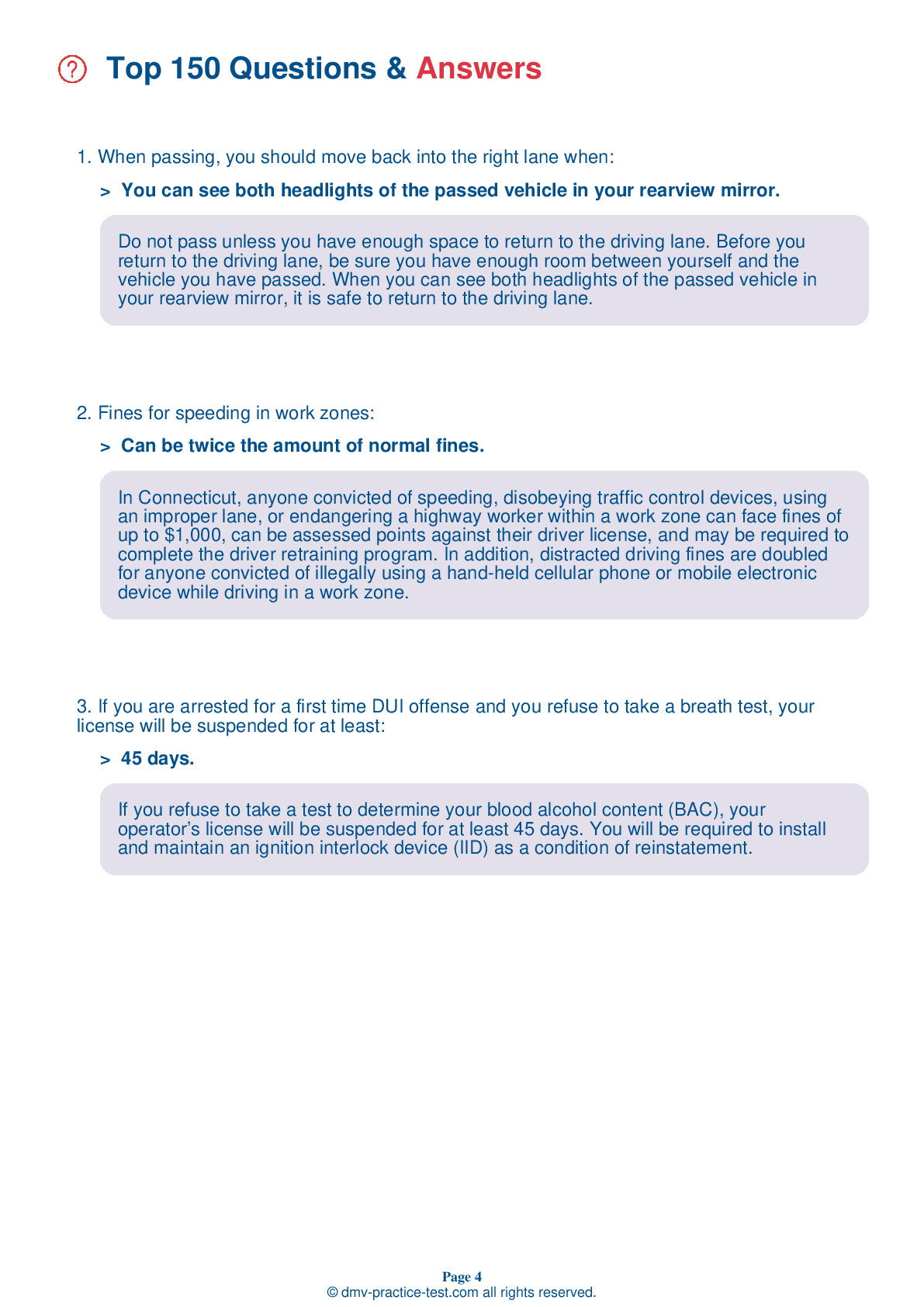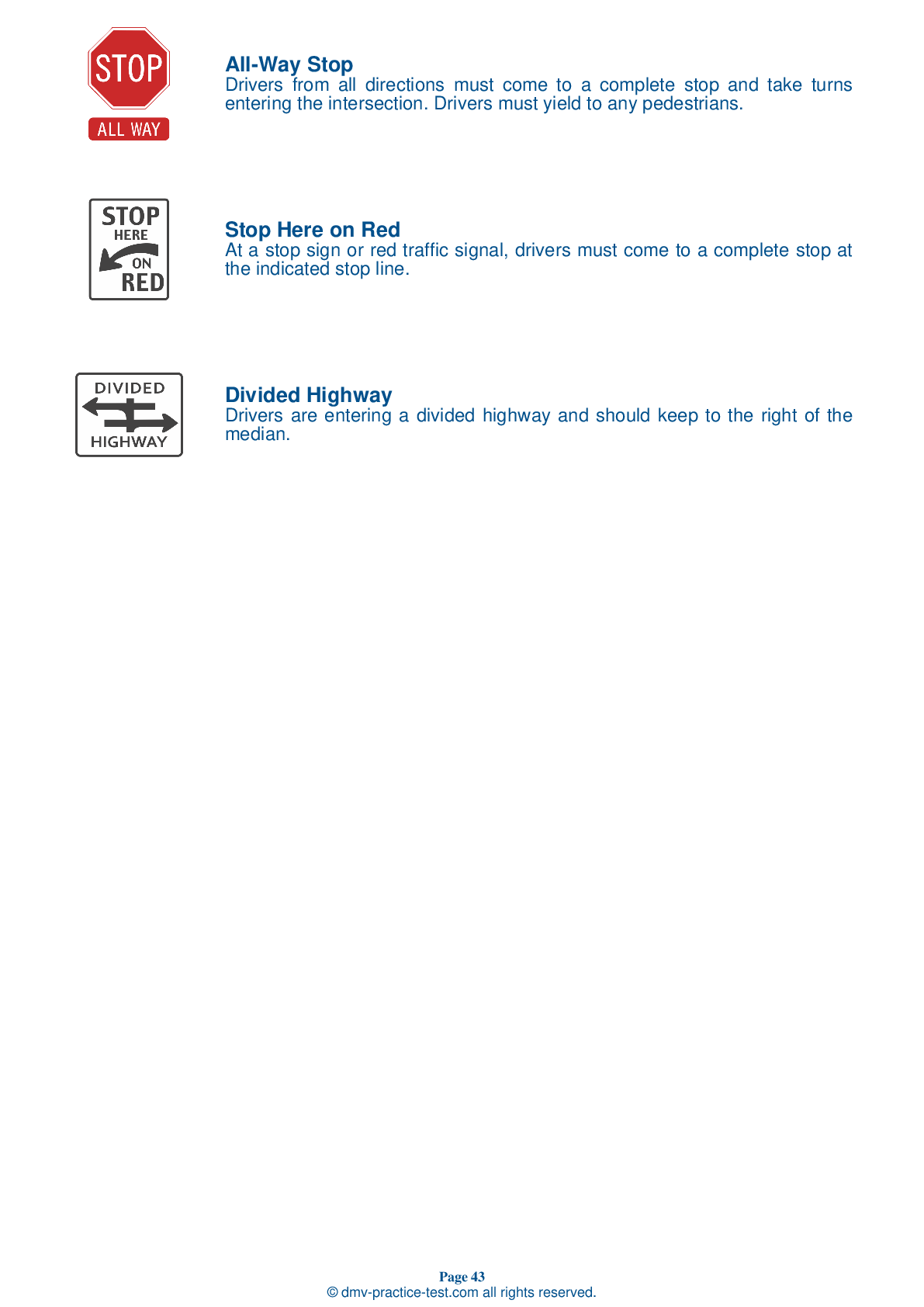FREE Connecticut DMV Practice Test #3 Page 2 of 3
This set of Connecticut DMV practise tests was just updated for January 2025. It includes questions based on the Connecticut Driver Handbook's most essential traffic signs and regulations for 2025. Use actual questions that are very similar (often identical!) to the DMV driving permit test and driver's licence exam to study for the DMV driving permit test and driver's licence exam.
Each practise test question has a hint and explanation to assist you in remembering the concepts. The written component of the official DMV test will include questions about road rules, traffic signs, and driving statutes, as well as information from the Driver Handbook.
To achieve the required passing grade, you must correctly answer 20 of the 25 questions. Take our DMV practise exam to help you prepare for your Connecticut instruction permit or driver's licence.
The DMV exam is available in several languages.
Using any form of testing help will result in an automatic fail, and the DMV may take further action against your driver's licence, so avoid it.
9 . This sign means:
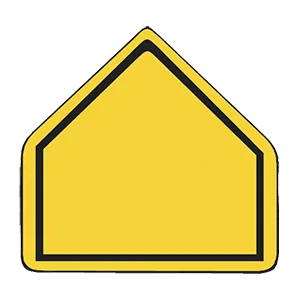
A five-sided yellow or yellow-green sign alerts drivers to either a school zone or school crossing.
10 . If a tire blows out, you should:
If a tire suddenly blows out while you are driving, hold the steering wheel tightly and keep the vehicle going straight.You should slow down gradually, taking your foot off the gas pedal and using the brakes lightly. Do not stop on the road if at all possible. Pull off the road in a safe place.
11 . The following statements regarding the use of seat belts are true, except:
State law requires that safety belts are worn even if a vehicle is equipped with airbags. While airbags are good protection against hitting the steering wheel, dashboard, and windshield, they do not protect you if your vehicle is hit from the side or rear or if the vehicle rolls over. An airbag will not keep you behind the wheel in these situations.
12 . If your vehicle has a two-part safety belt system, you should:
If your vehicle has a two-part seat belt system, be sure to wear both the lap belt and the shoulder belt. Wearing either part alone greatly reduces your protection. If you have an automatic shoulder belt, be sure to buckle your lap belt as well.
14 . A distraction when driving is:
A distraction when driving is anything that takes your attention away from driving. Driver distractions may occur anytime and anywhere. Distracted driving can cause collisions, resulting in property damage, injury, and death.
15 . When parking your vehicle on any hill:
When parking on a hill, you should always leave your vehicle in gear or in the "park" position. If there is no curb, you should turn your front wheels so that the vehicle will roll away from the center of the road if the brakes fail. If there is a curb, the front wheels should be turned toward it (if headed downhill) or away from and gently touching it (if headed uphill).
16 . If you are feeling fatigued while driving, you should:
When driving, watch for warning signs of fatigue. You are too tired to drive safely if you are struggling to keep your eyes open, drifting from your lane, or turning up the radio and rolling down your windows to keep yourself awake. If you notice these signs, it is a good idea to find a safe place to park so you can refresh yourself with a short nap.
See the exact questions that will be on the 2025 Connecticut DMV exam.
99.2% of people who use the cheat sheet pass the FIRST TIME
LT gives us an insight on how the cheat sheet provided her with all the study questions she needed before taking her test.
Joe initially studied with the handbook and failed his test, he eventually found us online, studied and pass his test the first time around.

